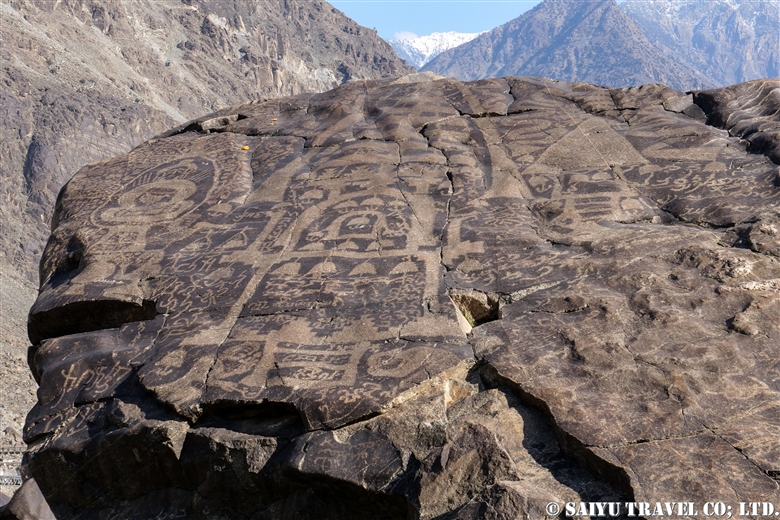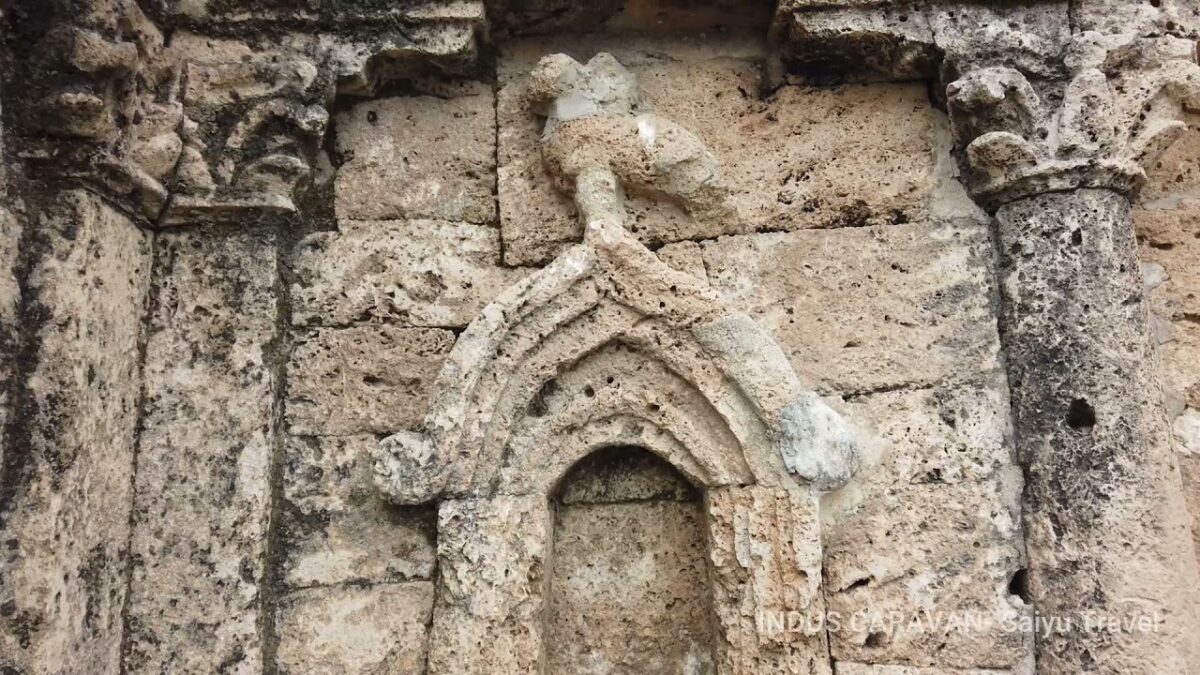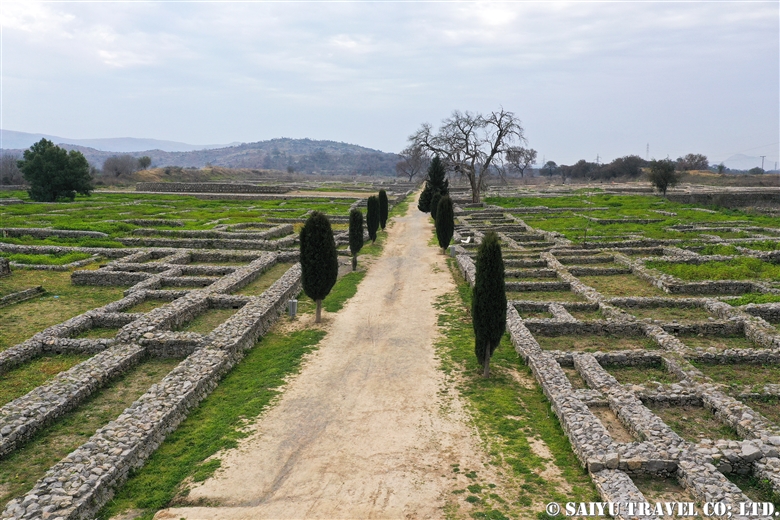
Butkara I is an archaeological site in the Swat Valley, which was one of the centers of Gandhara. It is known for its main stupa, which dates back to the 3rd century B.C. to King Ashoka of the Maurya Empire, and for the 272 votive stupas that surround it. Butkara I has not only a group of stupas, but also a monastery and other buildings—though that part has not yet been excavated, and houses have already been built on top of it.

The site was excavated between 1956 and 1962 by the Italian Archaeological Mission and the Department of Archaeology of the Government of Pakistan. The site dates back to the 3rd century B.C. during the Maurya Empire and is believed to have been in use until around the 11th century A.D.

The main stupa, with its circular Sanchi-shaped base, was enlarged five times over the centuries, with the oldest part, a 3rd century B.C. Maurya Empire stupa. Part of the excavation site reveals the process of its expansion.

Around the main stupa, there is a path that devotees walked along to the right. The visitors must have worshipped not only the stupa but also the reliefs carved on the drum.

The paths around the stupa are covered with paving stones, and some of them still have glass decorations.

This seated Buddha relief was excavated from a layer containing coins of Azes II of the Indo-Scythians, dated 35-12 B.C., so the relief is considered to date to the late 1st century B.C. or early posterior AD. Conservative archaeologists believe it dates to the 1st or 2nd century AD, since the Buddha image is believed to have appeared later. The origin of the Buddha image has always been one of the major themes of Gandhara art. The date of the Buddha image’s appearance continues to be debated.
Let’s take a look at the votive stupa surrounding the main stupa. This votive stupa is a small stupa-shaped structure built around the main stupa. It is thought to have been donated by the royalty and nobility of the time. Votive stupas were also objects of worship at that time.

This is part of the relief on the square base of the votive stupa. This figure may be a depiction of the Great Departure from the life of the Buddha, in which the beloved horse Kanthaka is licking Siddhartha’s feet and farewells him. This votive stupa may have been decorated with motifs favored by the donor.

Relief of grapes on a votive stupa

The head of a tiger depicted in relief. In the lower right is a delicately carved Corinthian capital.

Tigers are believed to have become extinct in Pakistan around 1900. At that time, Bengal tigers must have roamed the rich Swat forests.

Relief of a person holding a bowl in a memorial service.

Relief of a votive stupa, Triratna (the Three Jewels). It depicts the three chakras which represent the Dharma, the Buddha, and the Sangha, as objects of worship.

The motif is not known due to the large number of missing parts. The material used for the sculpture is generally green phyllite.

Here are some of the Butkara I artifacts on display at the Swat Museum. I picked out some items that are unique to Swat.

Artifacts from Butkara I: A panel showing a scene from the life of Buddha: Siddhartha Going to School. This scene in Gandhara depicts him going to school riding on a sheep. Sometimes he rides directly on the sheep, and sometimes he rides in a sheep-led cart. So far, no theories seem to explain the reason for this.

Artifact from Butkara I: A female figure of an aristocrat of the time. She is wearing a very gorgeous hair ornament, showing the Swat customs of the time.

Artifact from Butkara I: Likewise, a statue that seems to represent an aristocratic woman of the time. The costume and decoration of the woman holding a lotus flower in one hand is beautifully depicted.

Artifact from Butkara I: This relief used to be at the site but was moved to the Swat Museum. In the scene of Siddhartha’s supposed “Engagement,” the prince Siddhartha stands in the center, the rightmost figure is a shy Yashodhara, and beside him is the priest that introduces Yashodhara. To the left of Siddhartha is a kneeling Mara and around her are Mara’s three daughters. Mara is depicted as a symbol of worldliness and a preventer of Siddhartha’s enlightenment.

Corinthian capital. It depicts a woman, possibly the donor, with acanthus leaves.
The Swat Museum has rooms for exhibiting artifacts from Barikot, the Saidu Sharif Stupa, and Butkara I. Please take your time to visit the museum.
↓↓ Butkara – Gandhara site of Pakistan
Butkara I – Although now surrounded by residential areas, a record of a visit by the Chinese monk Song Yun in AD 520 describes the very ornate Butkara Stupa complex.
Image & text: Mariko SAWADA
References: The Life of Buddha, by Isao Kurita, etc.
*Contact us, Indus Caravan for more information or to make arrangements for visiting Gandhara site in Pakistan & Afghanistan.
*Please follow us on Youtube, Instagram & Facebook
Category : = Video Clip KPK > ◆Khyber Pakhtunkhwa > - SwatTag : Travel Pakistan Blog , Buddhist tour , Butkara , Indus Caravan , Butkara Ⅰ , Saiyu Travel Pakistan , Swat Museum , Pakistan Travel company , Pakistan tour operator , Gandhara , Buddhist ruin of Pakistan , Swat , Pakistan Blog , Swat valley












































